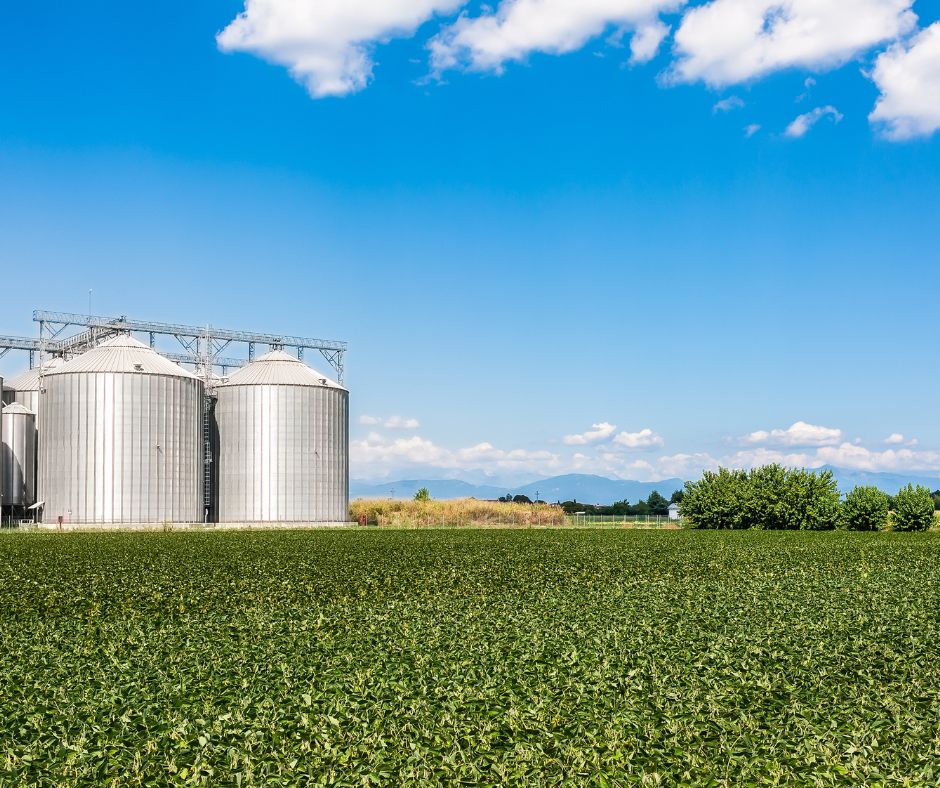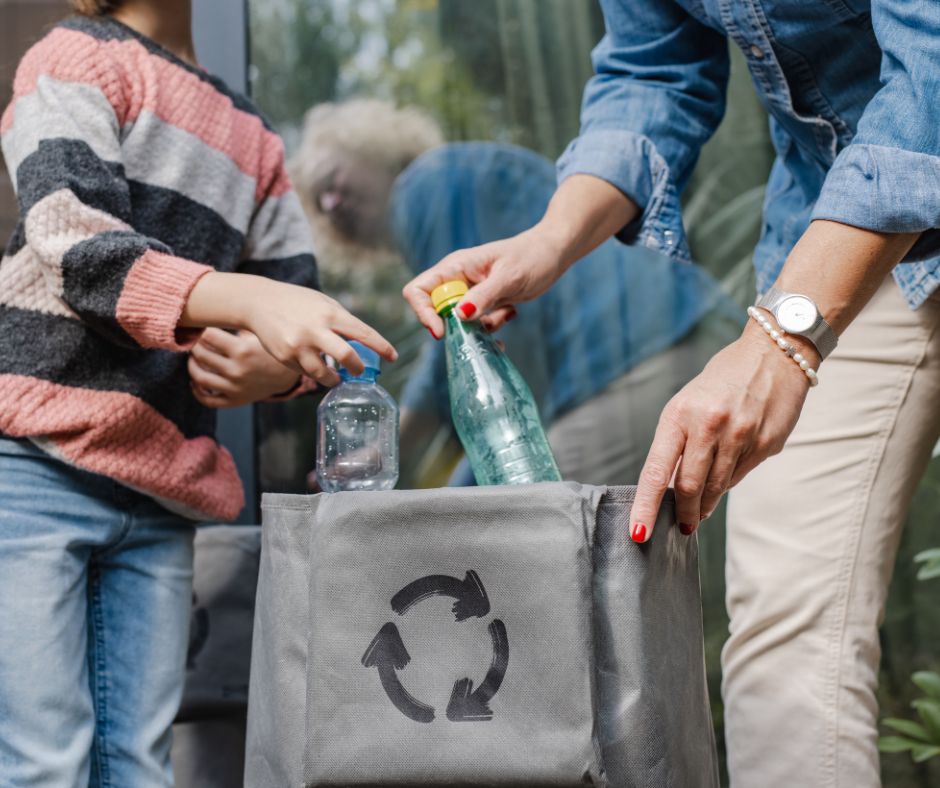In the face of a global crisis, the urgent need to address carbon emissions has become increasingly evident. The impact of our daily choices goes beyond the obvious sources of greenhouse gas emissions.
There exists a hidden contributor known as embedded or embodied carbon, which plays a significant role in our carbon footprint.
In this post, we will explore the concept of embedded carbon, its environmental and socio-economic implications, its impact on key industries, and potential solutions for mitigating its effects.
What is Embedded or Embodied Carbon?
Defining Embedded Carbon
Embodied carbon refers to the carbon emissions associated with the entire life cycle of a product, including its production, transportation, use, and disposal. It encapsulates the entire carbon footprint of raw materials, manufacturing processes, and energy consumption. Understanding embodied carbon allows us to assess the true environmental impact of products and services.
Identifying the Sources of Embedded Carbon
Embedded carbon is present in various forms and arises from multiple sources. Raw material extraction, manufacturing processes, transportation, and energy consumption during product use are some key contributors. Additionally, waste management and disposal also release carbon or greenhouse gas emissions. By uncovering these sources, we can effectively address embodied carbon and achieve net zero or carbon neutrality.
Unveiling the Lifecycle Assessment (LCA)
Lifecycle Assessment (LCA) is a critical tool in evaluating the environmental impact of products. It quantifies the greenhouse gas emissions associated with all stages of a product’s life cycle, from extraction to disposal.
Conducting LCAs enables us to identify hotspots of embodied carbon, thereby providing insights for targeted reductions and sustainable improvements.
The Significance of Conducting LCAs
LCAs play a pivotal role in understanding the environmental consequences of embedded carbon. They provide a holistic view of a product’s life cycle and enable us to make informed decisions.
By conducting LCAs, we can identify areas for optimization, develop sustainable alternatives, and mitigate the hidden environmental impact of our choices.
The Impact of Embedded Carbon

A. Environmental Consequences
Embedded or embodied carbon contributes significantly to climate change and environmental degradation. The emissions released throughout a product’s life cycle, from extraction to disposal, intensify the greenhouse effect. The resulting climate change leads to rising temperatures, extreme weather events, and the loss of biodiversity.
Assessing the Environmental Damage Caused by Embodied Carbon
With total embodied carbon emissions ranging from 411 to 1775 kg CO2-eq/ML-ww/d depending on the treatment process of the WWTP, this reveals the alarming statistic of how much GHG emissions the WWTP industry alone produces.
Also, while the quantity of operational carbon emissions for power plants has gradually decreased by 19% since 2011 due to the implementation of renewable alternatives, the power industry remains one of the biggest contributors to global GHG emissions (37% of 2021 greenhouse gas emissions).
B. Social and Economic Implications
Embodied carbon carries social and economic implications that extend beyond the environmental realm. The health impacts of climate change, such as increased heat-related illnesses and, cardiovascular and respiratory problems due to air pollution, result in significant healthcare costs.
Embodied carbon also affects vulnerable communities disproportionately, amplifying social inequalities. Marginalized populations often bear the brunt of environmental degradation caused by embodied carbon, experiencing higher rates of pollution-related health issues and limited access to resources for adaptation. Overall, economies heavily reliant on carbon-intensive industries may face challenges transitioning to sustainable, carbon-neutral practices.
Key Industries and Embedded Carbon
A. Construction and Buildings
Analyzing the Carbon Footprint of Construction Materials
Buildings currently account for a significant portion of global greenhouse gas emissions, contributing to approximately 9% of the total. Out of this percentage, 28% can be attributed to operational carbon, which arises from the energy required to heat, cool, and power buildings. The remaining 11% is associated with emissions from materials and construction processes.
The production of cement, steel, and other building materials generates significant embodied and operational carbon. Analyzing the carbon footprint of construction materials allows us to identify opportunities for reducing embodied carbon through sustainable alternatives and efficient construction techniques.
Sustainable building practices, such as using low-carbon materials, optimizing energy efficiency, and integrating renewable energy sources, play a vital role in reducing embodied carbon. Green building certifications and standards incentivize the adoption of sustainable practices, promoting a transition towards a more sustainable built environment.
B. Transportation and Mobility
Understanding the Global Carbon Emissions of Transportation Systems
With a staggering 20.2% of global emissions, transportation is another major contributor to embedded carbon. Fossil fuel consumption in cars, planes, ships, and other modes of transportation releases substantial emissions throughout their life cycles. Understanding the embodied carbon emissions associated with different transportation systems helps us identify opportunities for reducing embodied carbon through the adoption of cleaner fuels, electrification, and improved logistics.
Promoting sustainable transportation alternatives, such as public transit, cycling infrastructure, and shared mobility, can significantly reduce embodied carbon. Advancements in electric vehicles, hydrogen fuel cells, and sustainable aviation fuels also hold promise for decarbonizing transportation systems. Embracing these sustainable alternatives is essential for achieving substantial emissions reductions.
C. Food and Agriculture

Studies have approximated that the emissions generated by the global food system amount to 15.8 gigatons of carbon dioxide equivalent (GtCO2e), which represents around 30% of the total greenhouse gas emissions produced worldwide.
This is due to agricultural practices, land-use changes, and supply chain inefficiencies. The production of livestock, deforestation for agriculture, and food waste contribute to substantial emissions.
Transitioning to sustainable farming practices, such as regenerative agriculture and organic farming, can reduce embodied carbon and promote soil health. Additionally, minimizing food waste through improved supply chain management and consumer awareness plays a critical role in reducing carbon emissions. By promoting sustainable food systems, we can address embedded carbon while ensuring food security and resilience.
Mitigating Embedded Carbon
A. Technological Advancements
Innovations Driving a Reduction in Embodied Carbon
Technological advancements are key to reducing embodied carbon. Innovations such as carbon capture and storage (CCS), green chemistry, and renewable energy solutions help decouple economic growth from carbon emissions. Investing in research and development, and supporting the deployment of these technologies, can tackle embodied carbon emissions across various industries.
Carbon capture and storage technologies have the potential to capture and store carbon emissions from industrial processes, effectively reducing embedded carbon. Advancements in carbon capture, utilization, and storage (CCUS) techniques offer a pathway to mitigate emissions in sectors that are challenging to decarbonize fully.
Transcend Design Generator utilizes advanced generative design to revolutionize the design process for water and wastewater treatment facilities. By leveraging the power of artificial intelligence, this innovative tool automatically combines decisions and calculations from various engineering fields to generate unique and optimized designs.
With Transcend Design Generator, engineers can streamline and expedite the design process, saving valuable time and resources. By automating complex calculations and decision-making, the tool ensures that designs meet the highest standards of efficiency and effectiveness. This not only leads to improved performance and cost-effectiveness but also helps in addressing critical environmental challenges by facilitating the creation of sustainable and resilient water and wastewater treatment infrastructure.
B. Sustainable Policies and Regulations
The Role of Governments in Addressing Embedded Carbon
Governments play a crucial role in addressing embodied emissions through sustainable policies and regulations. Setting ambitious and global emissions reduction targets, implementing carbon pricing mechanisms, and supporting renewable energy deployment are critical steps. By creating a conducive net zero policy framework, governments can incentivize industries and individuals to decrease embodied carbon and transition to sustainable practices.
C. Individual Actions for Change
Empowering Individuals to Make a Difference

Individual actions can collectively make a significant impact on embedded carbon. By raising awareness and empowering individuals to make sustainable choices, we can drive change at the grassroots level. Actions such as reducing energy consumption, choosing low-carbon transportation options, embracing plant-based diets, and supporting sustainable businesses contribute to reducing embedded carbon in our daily lives.
Simple Steps to Reduce Embedded Carbon in Daily Life
There are several simple steps individuals can take to reduce embedded carbon in their daily lives. These include conserving energy at home, reducing water consumption, minimizing waste through recycling and composting, and supporting local and sustainable businesses. By making conscious choices, individuals become agents of change in the fight against climate change.
Challenges and Future Outlook
Several barriers hinder the widespread reduction of embedded carbon, including technological limitations, cost considerations, and lack of awareness. Overcoming these obstacles requires collaborative efforts from governments, businesses, and individuals. Investing in research and development, providing financial incentives, and promoting education and awareness are crucial steps in overcoming these barriers.
Education and awareness play a fundamental role in driving behavioral change and promoting sustainable practices. By fostering a deeper understanding of embodied carbon and its implications, individuals and communities are empowered to take informed actions and advocate for change. Educational initiatives, media campaigns, and engaging storytelling can raise awareness and mobilize support for reducing embedded carbon.
B. Opportunities for Collaboration
Engaging Stakeholders in Collective Action
Addressing embedded carbon requires collaboration among various stakeholders, including governments, businesses, civil society organizations, and individuals. By fostering partnerships, sharing best practices, and aligning efforts, collective action can be harnessed to drive substantial change. Collaboration platforms, industry initiatives, and multi-stakeholder engagement are instrumental in accelerating progress toward carbon neutrality.
Building partnerships is crucial for promoting sustainable innovation and scaling up solutions. Collaboration between academia, industry, and government facilitates knowledge sharing, research, and development of sustainable technologies. By working together, we can create a sustainable future that effectively addresses embedded carbon and promotes global environmental stewardship.
Conclusion
In conclusion, embedded carbon represents a hidden environmental impact that permeates our daily choices. Understanding and addressing embedded carbon is crucial for mitigating climate change, safeguarding the environment, and promoting sustainable development.
By analyzing the sources of embedded carbon, evaluating the environmental and socio-economic implications, and implementing solutions at individual, industry, and policy levels, we can collectively work towards a low-carbon future.
It is time to recognize the hidden environmental impact of our choices and take decisive action to reduce embedded carbon for the benefit of current and future generations.
Let us embrace sustainable practices, foster collaboration, and drive positive change in our pursuit of a greener and more sustainable world.
Ready to revolutionize your water and wastewater treatment facility design process? Discover the power of Transcend Design Generator and unlock the potential of advanced generative design.






